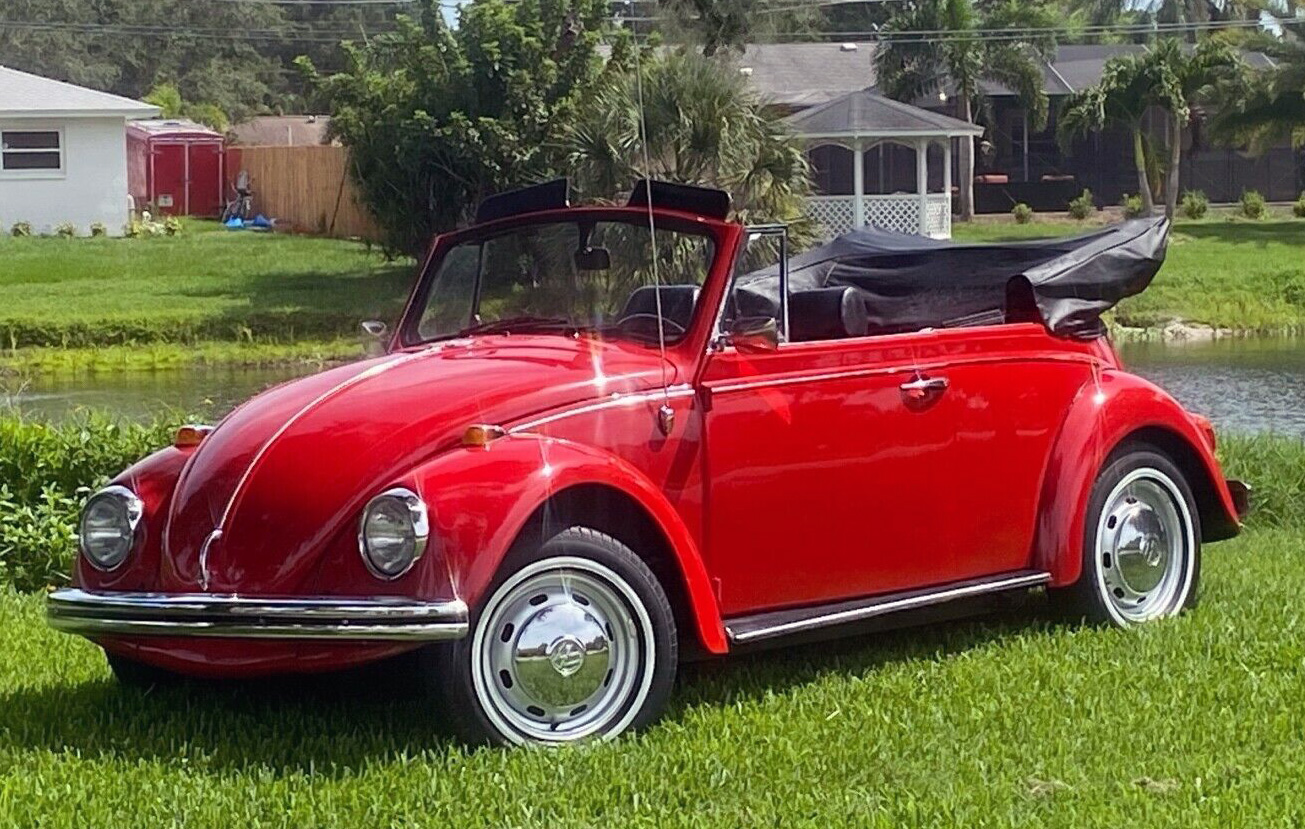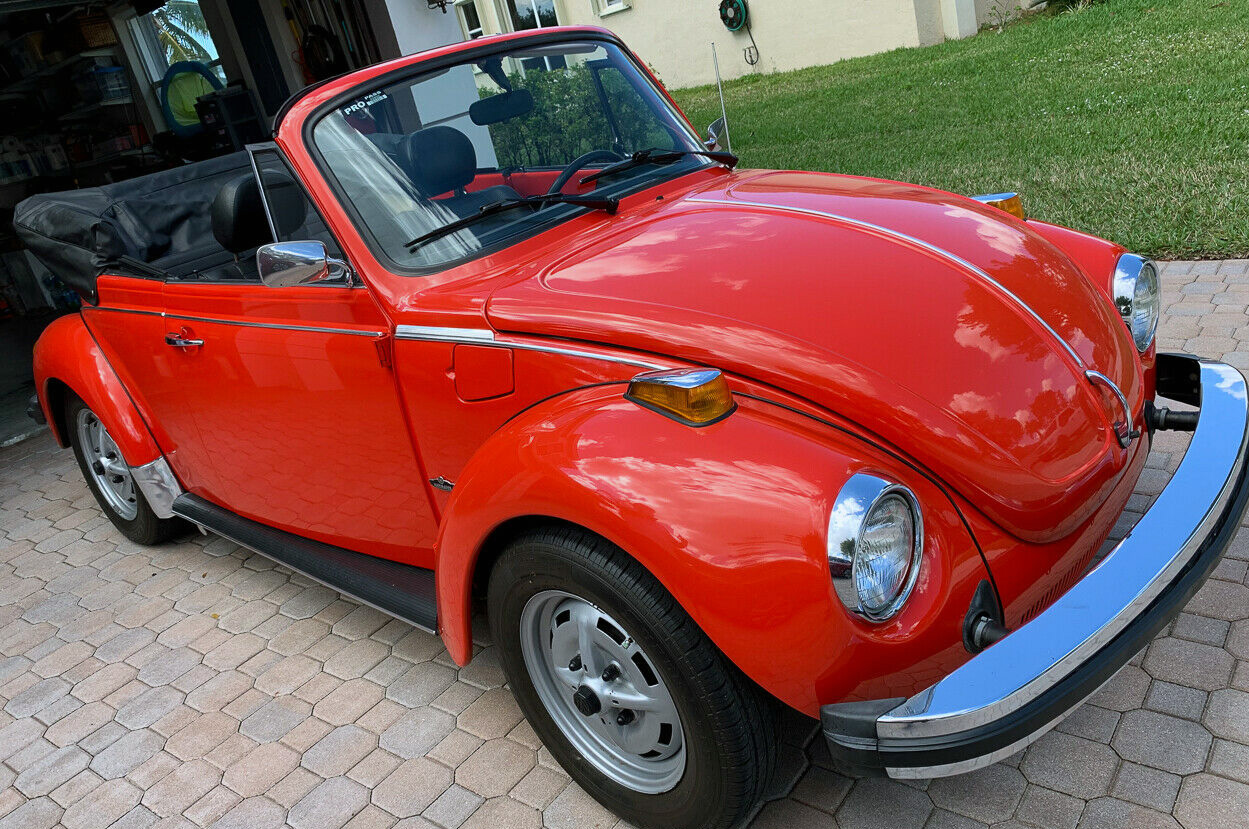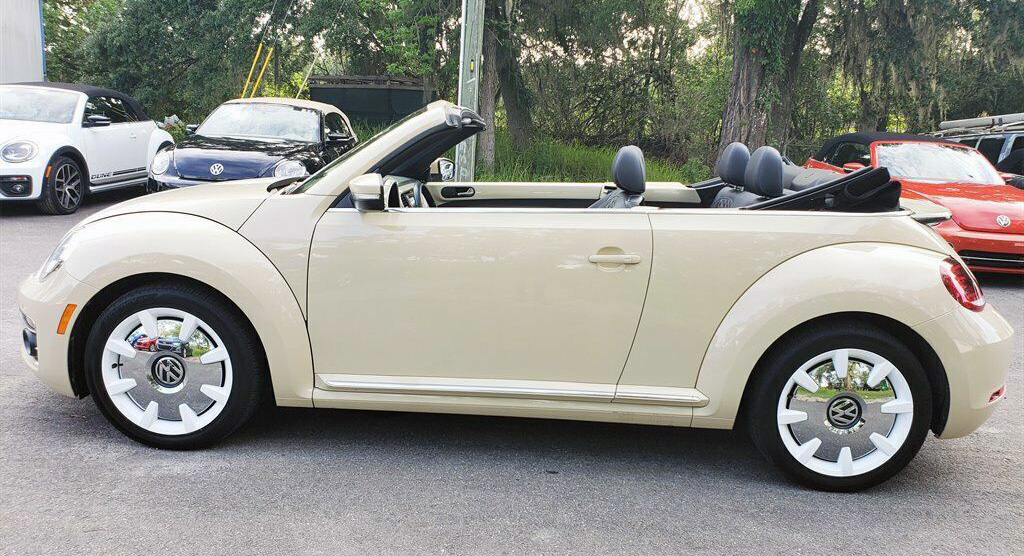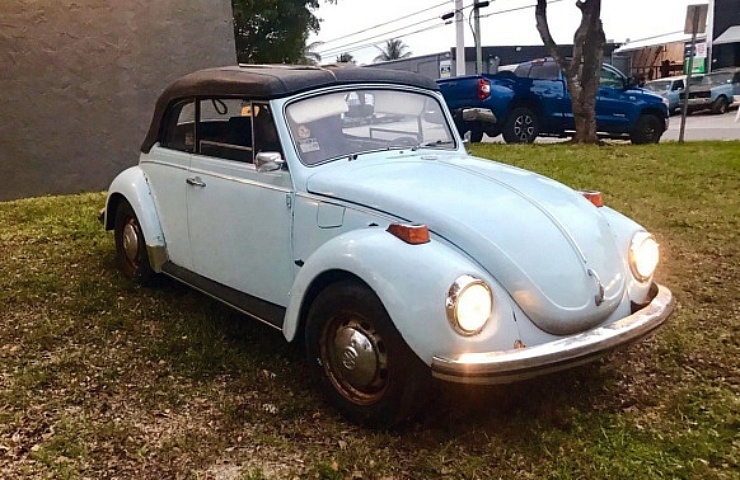The VW Beetle has a permanent place in the hearts of many American motorists. And the classic-era Beetle convertible is an integral part of the appeal. Through 1980, Volkswagen—working with Karmann, the famed coach-builder—built more than 330,000 Beetle Cabriolets.
To this day, the snug-fitting convertible top remains an ultra-popular feature for Beetle owners.

The 1968 Beetle convertible
Quality Construction
The Beetle convertible—also known as “Cabriolet”—has considerable reinforcement to increase rigidity to make up for its lack of a roof. The necessary components make the car quite different from the standard sedan. The rockers gain welded U-channel rails and a transverse beam under the rear seat. VW reinforced the doors too. The goal of these fundamental changes was to reinforce the chassis and prevent squeaks and rattles.
The classic Karmann top is fabric or vinyl on the outside, with a soft headliner inside that hides the frame and crossbars. Sandwiched between those layers is inch-thick padding, which started out made of rubber and horsehair and became foam in later versions. The early oval tempered glass rear windows were small but grew with time. After 1968, the windows had heating elements.
The side window frames went from polished aluminum to chromed brass in 1954. Concours judges notice that kind of detail. Aficionados also look for the small “Karmann” badge on the right front quarter panel, modified to a more curved shape in 1961. If it’s not there, maybe a builder modified the Bug from a sedan. That’s a concern because it’s unlikely to have the proper structural integrity. Classic World in the UK advises on why conversions are a bad idea.
A Convertible Beetle Is a Premium Beetle

A late Karmann from 1979, with rare AC.
Beetle convertibles don’t only offer open-air driving. They are also premium models with “luxury” fittings, such as twin rear ashtrays and map pockets, plus a vanity mirror in the visor. Through 1969, they got wheel trim rings, too.
The very last classic Beetle, number 21,529,464, was produced in Mexico in 2003. Karmann Cabriolet production ended considerably before that, with the close of US sales in 1979.
To mark that occasion, VW offered a 1978 Champagne Edition ragtop with either blue or red metallic paint and a white interior. Features included sport wheels, an AM/FM radio, and a padded steering wheel. VW made only 1,100 examples of the Champagne model. The final classic VW convertible is the Epilogue Edition of 1979, in triple black.
Keeping the Convertible Beetle Alive

Final Edition from the very end, 2019.
When the New Beetle debuted in 1999, the convertible stayed in the lineup.
Volkswagen offered two convertible versions—with a manual top on the lower-priced editions and a semi-automatic power version on upper trims. The tradition of very well-built and multi-layered top construction continued. A unique “Triple White” convertible was offered as part of the second-generation New Beetle line in 2008. Beetle production ended once and for all in 2019.
Any Beetle with a convertible top has added financial value as well as more driving fun. But buyers should tread carefully. The convertible’s chief virtue—its quality construction—can be its Achilles Heel if it’s in poor condition. The top isn’t structural so problems aren’t dangerous—even if the material is in tatters. But there could be leaks. And it can be tricky and expensive to restore the top to match the original.
As you might expect with such a popular car, the Beetle convertible is well-represented with numerous listings on eBay. There are usually more than 50 for sale at any time. Later-model Cabriolets are supplied with parts, as are classic-era Beetles. They’re simple cars to work on yourself.
Beetle convertibles, in new or old styles, are likely to appreciate. Buying one now for fun in the sun—before prices get sky-high—is a smart idea on many levels.
Continue reading about VW Beetles:





